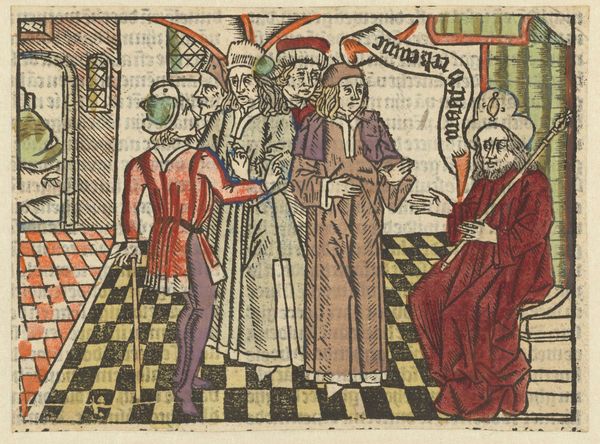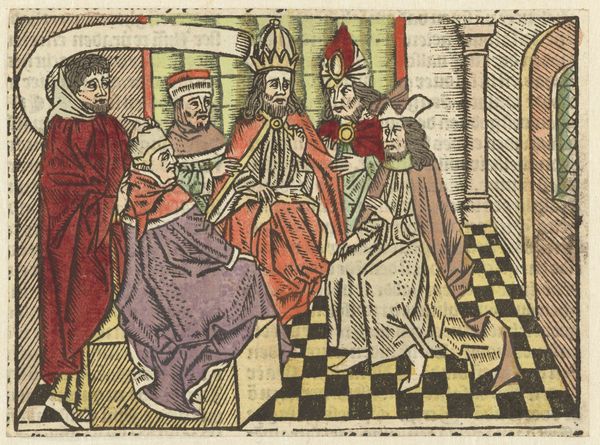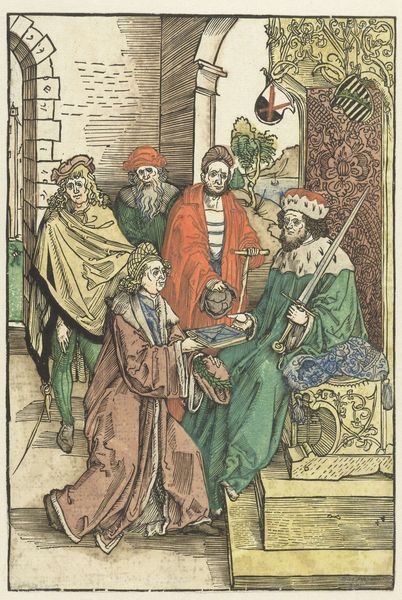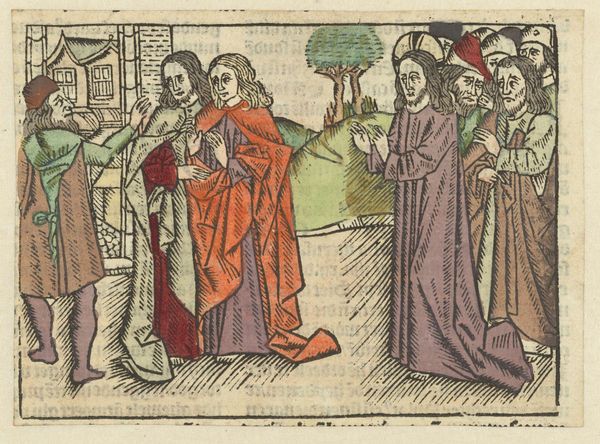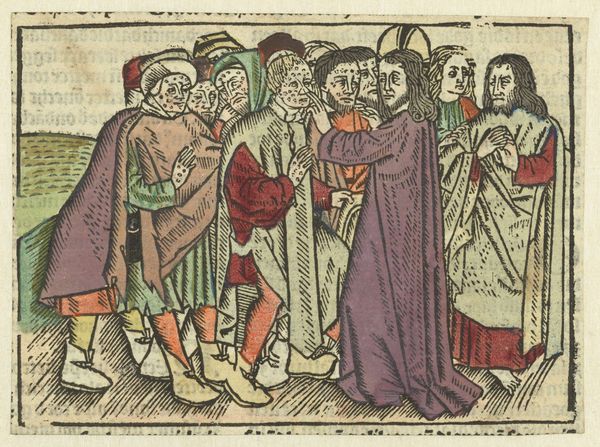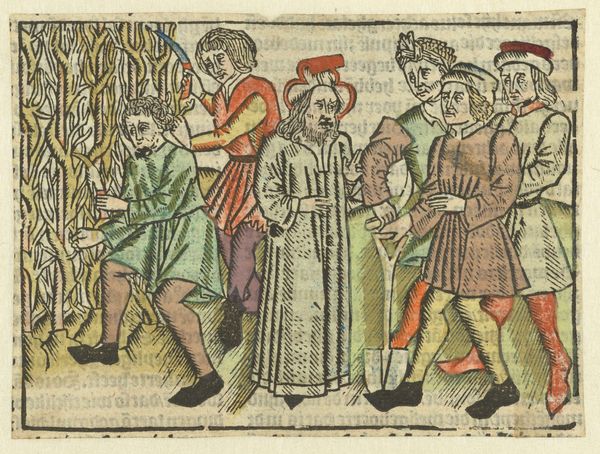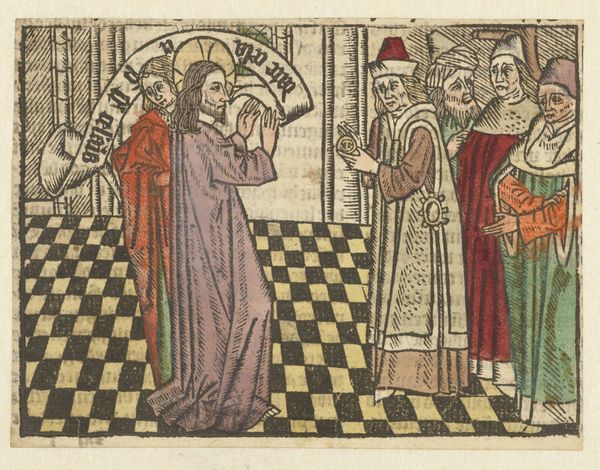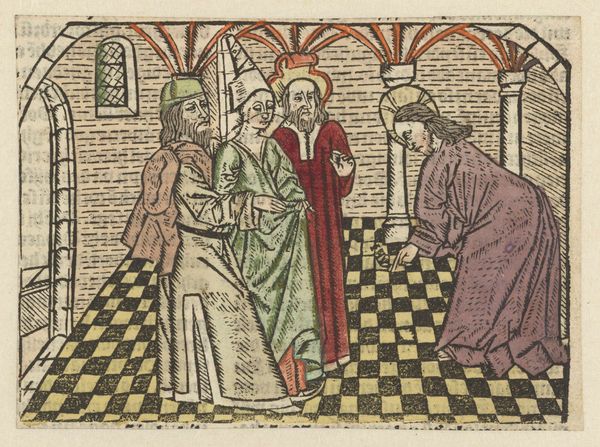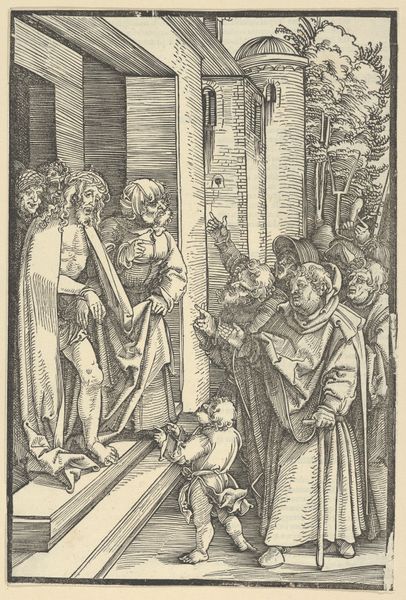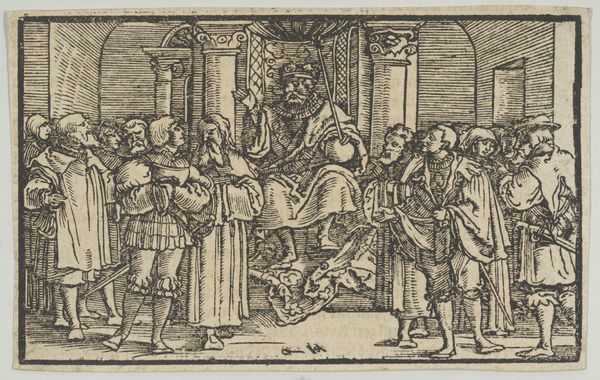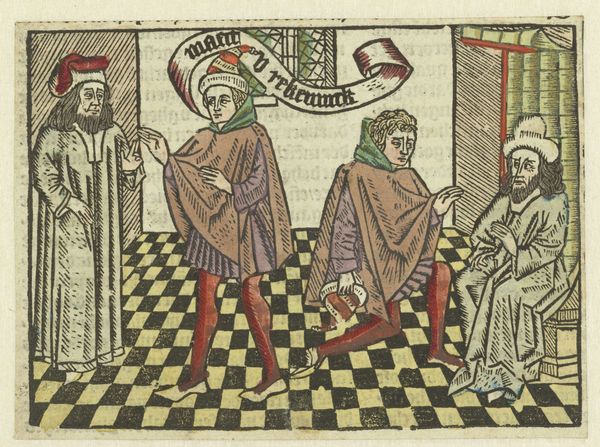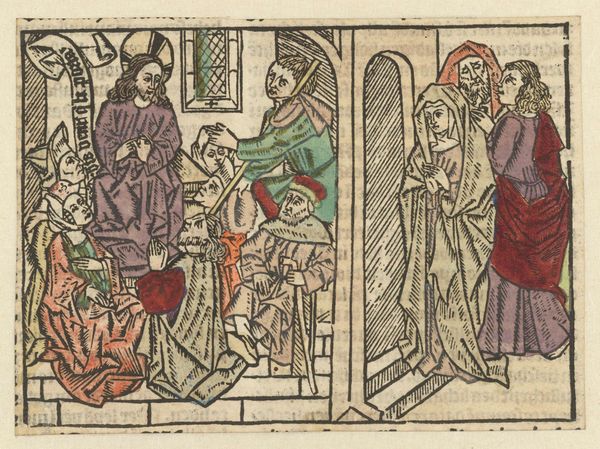
print, woodcut
# print
#
pen illustration
#
figuration
#
woodcut
#
history-painting
#
northern-renaissance
Dimensions: height 93 mm, width 129 mm
Copyright: Rijks Museum: Open Domain
Curator: Standing before us is the woodcut "Prediking van Christus," or "Preaching of Christ," created by the Master of Antwerp I between 1485 and 1491. The medium is print, offering a striking glimpse into the Northern Renaissance. Editor: It has this feeling of peering into a very formal room… the characters are caught, poised. I love that there is this angular perspective that gives it a somewhat staged, theatrical impression. Curator: Yes, the linear perspective certainly flattens the space, emphasizing a more symbolic representation over realistic depth. Notice how the lines of the woodcut create textures and patterns. This contributes significantly to the overall visual impact. The robes, in particular, benefit from this rendering, their geometric lines giving volume and shape. Editor: Absolutely, I think that texture helps animate a rather still scene. Is Christ preaching? Those folks don’t look so interested. The halos here don’t really light up like in other paintings; he’s just one of the characters… And these characters’ faces are a range of interest or concern and, in some cases, like this guy in front with the headdress, pure boredom! Curator: Indeed, the depiction offers a social commentary. It is of high illustrative, and perhaps didactic value. It represents an interior with a vaulted roof where, against all expectations, the robes almost overshadow Christ. In any event, he gesticulates emphatically, seemingly unaware. Editor: It’s funny. So, as you mention the lines—I find it interesting to imagine the Master actually carving into that wood. Can you feel that material process—the labor needed—when you look closely? It’s almost as if they were composing some kind of medieval comic panel or caricature about this event from the gospel. Curator: Precisely. The materiality is intrinsic to its reception. And the very graphic nature lends it a certain power beyond simple narration. The interplay between line and form transforms spiritual dogma into concrete image, accessible to the masses. Editor: The past becomes suddenly alive here; a singular interpretation etched in time through art, so vivid and raw, offering a lens into this artist’s world and worldview… It’s rather humbling to imagine. Curator: I quite agree. Let us leave it at that: a humbling, and insightful glimpse into the past, materialized by formal rendering of faith, set into the very fabric of image.
Comments
No comments
Be the first to comment and join the conversation on the ultimate creative platform.
